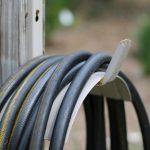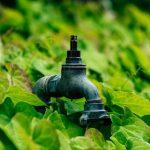Time, a precious commodity that we all wish we had more of, is often wasted on mundane tasks. One of those tasks could be mopping up leaks from your washing machine. Does this scenario sound familiar? If so, you’ve come to the right place. The good news is that annoying leaks from your washing machine can be a thing of the past with the right preventative steps and guidance.
Contents
- Washing Machine Conservation Techniques
- How Dryers Demand Upkeep
- Indicators of Washer Maintenance
- Preventing Leaks in the Laundry
- Regular Care for Longevity
- Appliance Life Expectancy
- Washer and Dryer Sustenance
- Practices for Daily Use
- Maintenance Tips and Checklists
- In Conclusion
- Frequently Asked Questions (FAQ)
Washing Machine Conservation Techniques
Like most mechanical appliances, washing machines require regular care to operate at optimal performance. In fact, hoses should be replaced every three to five years as a preventative measure against leaks and potential water damage1. Considering that up to 78% of hose failures occur in machines less than 11 years old2, this becomes an even more crucial part of maintaining your washer.
This conservation tip can also go beyond just preventing mishaps. Regular upkeep contributes positively to bettering the efficiency and durability of your washing machine, allowing for improved performance over an extended period.
How Dryers Demand Upkeep
Much like its companion, clothes dryers also command regular care and upkeep. Lint build-up is particularly common in dryers and must be cleaned regularly. Ignoring this step risks fires and decreases your dryer’s effectiveness – necessitating extended dry times which escalate energy consumption.
Besides that, carefully inspecting vents and ductwork for blockages improves energy efficiency and safeguards against possible fire hazards. This routine maintenance coupled with paying attention to unusual noises or vibrations ensures your dryer enjoys a long and useful lifespan.
Indicators of Washer Maintenance

Understanding your washing machine’s warning signals is key to guarantee its longevity. One big red flag is leaking. Around 10% of all washing machine failures come from leakages due to poor hose connections. Other indicators may include inefficient cleaning, unusual vibrations or sounds, and extended wash cycles.
If any of these signs are ignored, the average cost of the resultant damage could be around $6,0005. A little preventive maintenance can go a long way towards saving money and keeping your washer performing optimally for longer.
Preventing Leaks in the Laundry
Investing in a leak detection system featuring an automatic water shut-off can immediately counteract and minimize leakage impacts, reducing catastrophic water damage chances by up to 96%. This investment can save potentially thousands of dollars given that over 150,000 homes annually experience damage due to washing machine hose failures.
Maintaining secure fittings and routinely inspecting hoses for potential breaks or weaknesses can also contribute significantly to leak prevention. It’s necessary to replace washers at any sign of trouble instead of waiting until significant damage is done.
Regular Care for Longevity
To increase the lifespan of your washing machine or dryer significantly, consider taking small regular actions such as cleaning lint filters after each use, regularly inspecting hoses, and running monthly cleaning cycles.
Remember, preventative care stops smaller problems from snowballing into costly repairs or full equipment replacements. Consistently scheduling professional servicing can also be invaluable for maintaining a completely operational laundry system.
Appliance Life Expectancy

The average lifespan of a washing machine is approximately ten years. However, this can vary based on the brand, usage, and maintenance level. To maximize your washing machine or dryer’s life expectancy, it’s worth investing the time and resources into scheduled maintenance practices.
Keep in mind that residential water damage due to washing machine-related failures is costing an average of $170 million in losses each year. A little more care can prevent these occurrences for an ultimately yield longer-lasting appliances and fewer headaches with your laundry routine.
Washer and Dryer Sustenance
A combined approach involving regular inspections, prompt replacements, and care for the machine can increase the lifespan of your washer and dryer significantly. Red flags should not be ignored but instead addressed promptly to avoid extensive damages and massive repair costs.
Homeowners can reach out to professional services like the Plumbing Industry Association when unsure about the necessary steps. They can advise you about proper maintenance procedures or even perform routine checks to ensure everything stays in order.
As a friendly reminder, incorporating these maintenance practices into your routine transforms the health of your laundry appliances from nuisance leaks to high-efficiency powerhouses. Prevention is better – and cheaper than cure after all!
Practices for Daily Use
If you’re like most Aussies, your washing machine is one of the hardest working appliances in your home. Keeping it leak-free not only preserves the condition of the machine, but also helps prevent household accidents and water damage. According to industry research, up to 78% of hose failures occur in washing machines that are less than 11 years old. This statistic only emphasizes the importance of regular maintenance and careful use.
Another practice for daily use is avoiding overloading the washing machine. Aside from preventing imbalances that can damage your washer’s drum and motors, it also reduces stress on the hoses and connections and thus lowers the likelihood of leaks. Additionally, always remember to use the right amount and correct type of fabric softener or detergent.
Last but not least, give your laundry setup some breathing room. Ensure that there are at least four inches between your washing machine and the wall to avoid kinks in the hose that could lead to leaks.
Maintenance Tips and Checklists

Keeping preventative maintenance in mind, there are specific steps you can add to either a monthly or bi-annual checklist. Primarily inspecting for signs of wear such as blisters on the hose, loose fittings or even rust can be part of this routine. Approximately 10% of all washing machine failures are due to leaks from poor hose connections, so this isn’t a step to skip over.
Installing a leak detection system with an automatic water shut-off can drastically reduce the likelihood of catastrophic water damage – by as much as 96% in fact! Considering the staggering statistic that over 150,000 homes each year experience damage due to washing machine hose failures, it’s a worthy investment.
As professional plumbers, we recommend that washing machine hoses be replaced every 3-5 years. Although a real workhorse, the lifetime of a washing machine rarely exceeds 11 years without significant wear and tear. This falls within the riskiest period for hose failure. Hence, regular replacement prevents problems before they occur.
We have machines as part of our manufactured goods to make lives easier. It’s essential therefore to honour their service by maintaining them regularly and respecting their limits for longevity. Always remember cleaning and clearing your washing machine and dryer vents consistently isn’t just hygiene practice but also reduces lint accumulation which can obstruct water flow causing leaks or even fires.
In Conclusion
Maintaining your washing machine connections not only extends the life of your appliance but also saves you from costly water damage repairs. By incorporating simple daily practices and following regular maintenance checklists, you would be saying goodbye to pesky leaks. Turn maintenance into a habit and enjoy the priceless peace of mind that comes with knowing you’ve mitigated a major home disaster.
Frequently Asked Questions (FAQ)
1. How often should I replace my washing machine hoses?
It is recommended to replace your washing machine hoses every three to five years as a preventative measure against leaks and potential water damage.
2. What are some common signs that my washing machine needs maintenance?
Some common signs include leaks, inefficiencies in cleaning, unusual vibrations or sounds, and extended wash cycles. These could be an indication of a problem that needs attention.
3. How can I prevent leaks in the laundry?
Investing in a leak detection system, maintaining secure fittings, and routinely inspecting hoses for potential breaks or weaknesses can significantly contribute to leak prevention.
4. What is the average lifespan of a washing machine?
The average lifespan of a washing machine is typically around ten years. However, it can vary based on factors such as brand, usage, and maintenance level.
5. How often should I clean my dryer’s lint filter?
It is advisable to clean the lint filter after each use of the dryer for optimal operation and prevention of fire hazards.
6. What can cause a washing machine to leak?
A washing machine can leak due to several reasons, including loose or damaged hoses or fittings, overloading, use of an inappropriate amount of detergent, or an old or worn-out appliance.
7. Can I carry out preventive maintenance myself or should I hire a professional?
While some steps such as daily inspections, cleaning lint filters, and ensuring secure fittings can be done by a homeowner, it is advisable to schedule professional servicing regularly for thorough checks and maintenance.
8. How does one increase a washing machine’s life expectancy?
To maximize your washing machine’s life expectancy, it’s worth investing time and resources into scheduled maintenance practices such as regular inspections, periodic hose replacements, and having a leak detection system in place.
9. Are washing machine leaks common?
Statistics have shown that around 10% of all washing machine failures come from leakages due to poor hose connections. While it is common, it can be prevented with regular checks and maintenance.
10. What is the average cost of repairing damage caused by a washing machine leak?
The average cost of repairing the resultant damage from a washing machine leak could be around $6,000. This makes preventive maintenance crucial.
Related posts:
 Simple DIY Washing Machine Maintenance: How to Keep Things Running Smoothly
Simple DIY Washing Machine Maintenance: How to Keep Things Running Smoothly
 Taking Care of Your Garden Hose: Preventing Leaks and Wear
Taking Care of Your Garden Hose: Preventing Leaks and Wear
 Laundry Drain Drama? How We Can Help
Laundry Drain Drama? How We Can Help
 Plumbing Peace of Mind: Professional Preventative Maintenance for Your Home
Plumbing Peace of Mind: Professional Preventative Maintenance for Your Home
 Leaking Garden Tap? Dan’s Plumbing Provides Quick and Lasting Repairs
Leaking Garden Tap? Dan’s Plumbing Provides Quick and Lasting Repairs
 Our Practical Tips to Help Prevent a Dishwasher Drain Block
Our Practical Tips to Help Prevent a Dishwasher Drain Block



